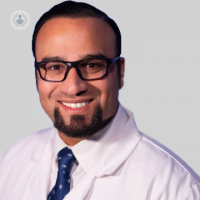Exploring facelift options
Written in association with:Facelift procedures have long been the cornerstone of cosmetic surgery, offering individuals a chance to turn back the hands of time and regain a more youthful appearance. But with the multiple options available, it's essential to understand the nuances of each procedure before embarking on this transformative journey. In his latest online article, Dr Fas Arshad gives us his insights.

What are the different types of facelift procedures available?
Over time, facelift techniques have evolved, offering patients more natural and longer-lasting results. One such advancement is the Deep Plane facelift, a technique championed by experts like Dr Arshad. This procedure targets the retaining ligaments responsible for facial sagging, allowing surgeons to reset the deeper facial layers, known as SMAS, to their original, youthful positions.
Will a facelift get rid of all my wrinkles and sagging skin?
A common question among facelift candidates is whether the procedure can eliminate all wrinkles and sagging skin. The answer lies in the mechanics of the surgery. By lifting the SMAS in a vertical direction, not only does the skin elevate, but so does the muscular fascia beneath it. This comprehensive approach results in reduced wrinkles and sagging, particularly around the jowls and neck, sculpting a more youthful contour.
What are the risks or complications associated with facelift surgery?
While facelift surgery is generally safe, it's not without its risks. As a Head and Neck surgeon, Dr Arshad brings expertise and precision to facial procedures. However, like any surgery, there's a possibility of bruising, swelling, and fluid accumulation post-operation. Additionally, asymmetrical facial movements and rare instances of permanent nerve injury may occur, though the latter is exceedingly rare.
What is the recovery process like after?
Recovery from a facelift follows a structured timeline:
- Day 1: Drains are removed, and swelling and bruising may be present.
- Day 4: Compression bandages are removed.
- Day 7: Sutures are taken out, allowing for gentle walks.
- After the first week: Lymphatic drainage massages and ointment application aid in healing.
- After 2 weeks: Patients are restaurant-ready and can resume light exercise.
- After 3 months: Initial healing is complete.
- After 9 months: Full recovery is typically achieved.
How soon can I expect to see the final results of my facelift?
While some results are immediately noticeable, the full impact of a facelift unfolds gradually. Final results become apparent around the three-month mark, with ongoing improvements observed up to nine months post-operation.
Can I combine a facelift with other cosmetic procedures?
Many patients opt to combine facelifts with complimentary procedures for comprehensive rejuvenation. Dr Arshad often recommends adjunct procedures such as lip lifts, brow lifts, blepharoplasty (eyelid surgery), and rhinoplasty (nose reshaping) to achieve harmonious facial aesthetics.
Dr Fas Arshad is an esteemed plastic and ENT surgeon. You can schedule an appointment with Dr Arshad on his Top Doctors profile.


